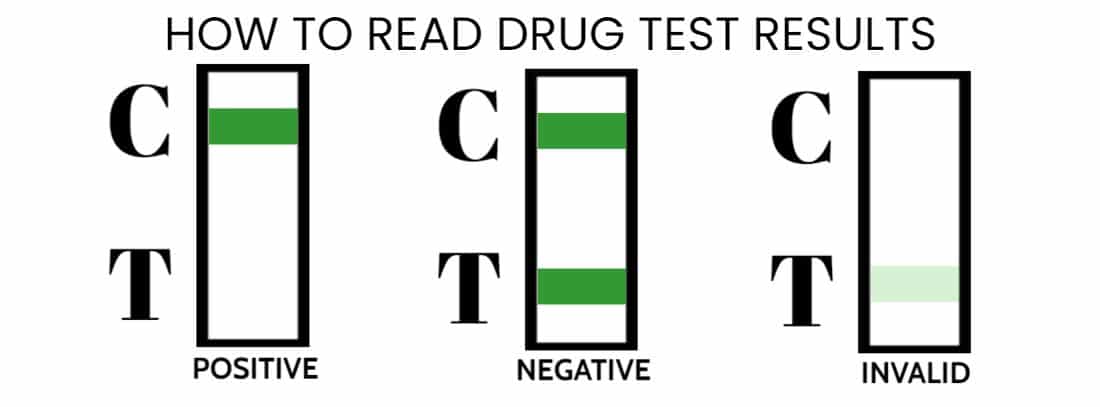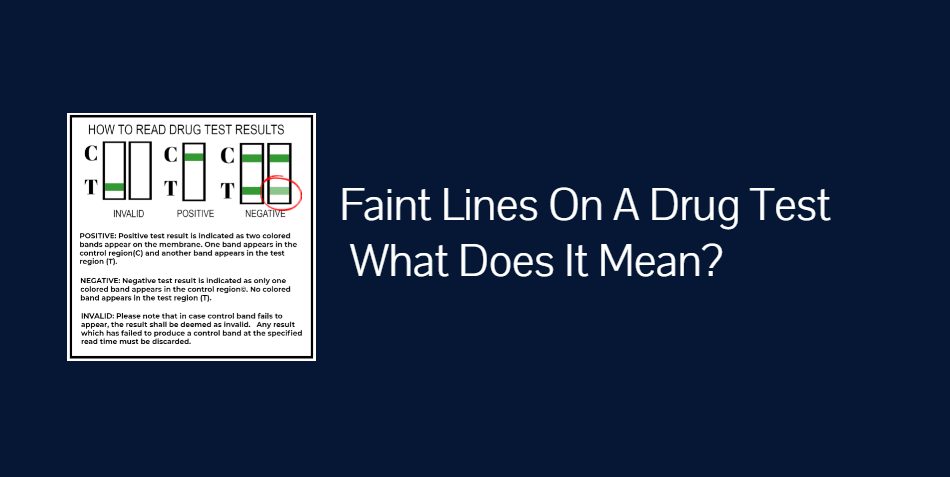All about faint lines on a drug test.
Getting a faint line on a drug test can be a nerve-wracking experience. Whether you’re taking a test for employment, probation, or personal reasons, seeing that faint line can leave you with more questions than answers. Does it mean you’re positive for drugs? Could it be a false positive? What steps should you take next? This article will delve into the world of faint lines on drug tests, demystifying their meanings and providing the information you need to navigate this situation.
It’s important to understand that faint lines on a drug test can have various interpretations depending on the circumstances. Factors such as the type of drug test, the sensitivity of the test, and the time elapsed since drug use can all influence the presence of a faint line. We’ll explore each of these factors and explain how they can affect your test results. Additionally, we’ll offer some practical advice on what you should do if you encounter a faint line on your drug test.
Stay tuned as we unravel the mysteries behind faint lines on drug tests and help you make sense of the results.

Understanding drug testing and faint lines
Drug testing has become a common practice in various aspects of life, including employment, probation, and personal reasons. It is a process that aims to detect the presence of drugs or their metabolites in a person’s system. However, the interpretation of drug test results can sometimes be confusing, especially when faced with a faint line on the test. In this section, we will explore the basics of drug testing and how it relates to faint lines.
How do drug tests work?
Drug tests typically rely on the detection of specific substances or their metabolites in a person’s body. There are different types of drug tests, including urine tests, saliva tests, hair tests, and blood tests. Each type of test has its own advantages and limitations, but the basic principle remains the same: to identify the presence of drugs.
Urine tests are the most commonly used method for drug testing due to their non-invasive nature and relatively low cost. These tests detect the metabolites of drugs that are excreted through urine. Saliva tests, on the other hand, are quick and easy to administer, providing immediate results. Hair tests can detect drug use over a longer period of time, as drugs can be trapped in hair follicles for months. Lastly, blood tests are the most accurate but are invasive and expensive.
Types of drug tests that may show faint lines
Faint lines on drug tests can occur with various types of tests. However, the most common type associated with faint lines is the urine test. Urine tests often use a test strip that contains specific antibodies that react with drug metabolites. When a drug or its metabolite is present in the urine sample, it binds to the antibodies, causing a visible line to appear on the test strip.
The intensity of this line can vary, and sometimes it may appear faint. It is important to note that faint lines can also occur in other types of drug tests, such as saliva tests or even blood tests. The interpretation of these lines can differ depending on the test and the specific drug being detected.
What does a faint line on a drug test mean?
Faint lines on drug tests can be interpreted in different ways, depending on the circumstances. In some cases, a faint line may indicate a positive result, meaning that the drug or its metabolite is present in the system. However, it is important to consider other factors before jumping to conclusions.
Factors that can affect the visibility of the test line
Several factors can influence the visibility of the test line on a drug test. One of the main factors is the sensitivity of the test. Different drug tests have different thresholds for detecting drugs or their metabolites. Some tests may be more sensitive, requiring a lower concentration of the drug to produce a visible line, while others may be less sensitive.
The time elapsed since drug use is another crucial factor. Most drugs are metabolized and eliminated from the body within a specific time frame. If a drug test is conducted too long after drug use, the concentration of the drug or its metabolite in the body may be too low to produce a strong test line. In such cases, a faint line may be observed.
Another factor to consider is the quality of the drug test itself. Low-quality tests may produce inconsistent or unreliable results, including faint lines. It is essential to use reputable and validated drug tests to ensure accurate and reliable results.
Common misconceptions about faint lines on drug tests
Seeing a faint line on a drug test can be confusing and lead to misconceptions. One common misconception is that a faint line indicates a false positive result. While false positives can occur, especially with less accurate tests, it is not always the case with faint lines. It is important to consider all the factors mentioned earlier before assuming a false positive result.
Another misconception is that a faint line means the drug is still in the system. As mentioned earlier, drugs are metabolized and eliminated from the body over time. A faint line does not necessarily mean the drug is still present in the system, but it could indicate recent drug use.
Steps to take if you see a faint line on a drug test
Encountering a faint line on a drug test can be a stressful experience. If you find yourself in this situation, it is essential to take the appropriate steps to understand the results accurately and determine the next course of action.
1. Verify the validity of the test: Confirm that the drug test is not expired and is from a reputable brand. Using outdated or low-quality tests can lead to unreliable results, including faint lines.
2. Consider the drug detection window: Understand the drug detection window for the specific drug being tested. If the faint line is observed outside of this window, it may be a false positive or an indication of residual metabolites from previous drug use.
3. Consult with a healthcare professional: If you are unsure about the interpretation of the test results, it is recommended to seek advice from a healthcare professional. They can provide valuable insights and help you understand the implications of the faint line.
4. Retest if necessary: In some cases, it may be necessary to retest using a different type of drug test or a more sensitive test. This can help confirm or clarify the initial results and provide a clearer outcome.
5. Follow proper procedures: It is crucial to follow proper procedures when conducting a drug test. This includes collecting the sample correctly, following the instructions provided with the test kit, and adhering to the specified storage and handling conditions. Proper procedures help minimize the risk of inaccurate results.
How to interpret the results of a drug test with a faint line
Interpreting the results of a drug test with a faint line can be challenging. To interpret the results accurately, it is important to consider all the relevant factors and consult with a healthcare professional if necessary.
In general, a faint line indicates the presence of the drug or its metabolite in the system, although the concentration may be low. The intensity of the line does not necessarily correlate with the level of drug use or impairment. It is crucial to consider the sensitivity of the test, the drug detection window, and other factors mentioned earlier to make an informed interpretation.
Tips for accurate drug testing results
To ensure accurate drug testing results and minimize the chances of encountering a faint line, consider the following tips:
1. Use reliable and validated drug tests: Choose reputable brands and validated drug tests to ensure accurate and reliable results.
2. Follow proper collection and handling procedures: adhere to the specified procedures for collecting, storing, and handling the urine or other samples. Proper procedures help prevent contamination and ensure reliable results.
3. Understand the drug detection window: Familiarize yourself with the drug detection window for the specific drug being tested. This will help you interpret the results accurately and avoid confusion.
4. Seek professional advice if needed. If you are unsure about the interpretation of the test results or have any concerns, consult with a healthcare professional. They can provide guidance and help you make informed decisions.
Conclusion: Importance of following proper drug testing procedures
Faint lines on drug tests can be a source of confusion and anxiety. Understanding the factors that can influence the visibility of the test line is crucial for an accurate interpretation of the results. It is important to consider the sensitivity of the test, the drug detection window, and the time elapsed since drug use.
If you encounter a faint line on a drug test, it is recommended to verify the validity of the test, consult with a healthcare professional if necessary, and consider retesting if needed. Following proper drug testing procedures, using reliable tests, and seeking professional advice when needed can help ensure accurate results and alleviate concerns surrounding faint lines on drug tests.
Remember, accurate drug testing is essential for maintaining safety and trust in various areas of life, and following proper procedures is key to achieving reliable results.



